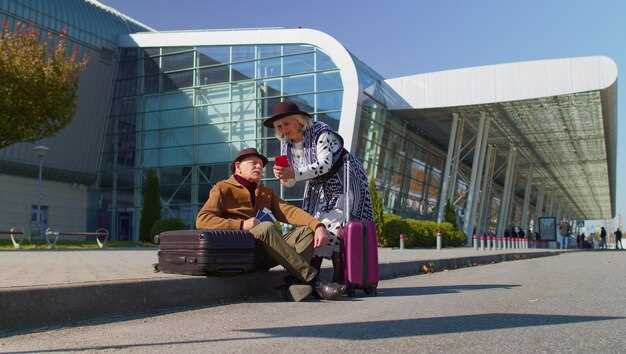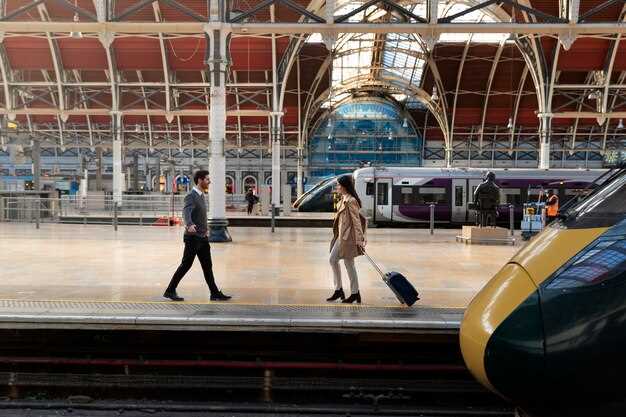Recommendation: book a direct shuttle from the arrival area; the driver will deliver you to the city center in approximately 41minutes, with a predictable cost. This option suits budget travelers; first-class travelers; very long-distance travelers alike, where a fixed hand transfer at the terminal is present.
Rail choices: fast trains from the hub deliver speed; road routes via a driver service offer flexibility. A single ticket could cost about 70–140 CNY; travel time is approximately 35–45 minutes by rail; road travel ranges 60–90 minutes depending on rush; driving conditions during peak hours could add minutes. From the same terminal, shuttle connections operate on fixed schedules, presenting a budget-friendly option with predictable arrival windows.
Notes for arrival: The following steps help travelers save time; identify the terminal where departures begin; after exit, driver service offers door-to-door transfer; hand luggage is convenient for quick transfers; for travelers seeking comfort, first-class seating on rail is available at a premium; culture around service varies; booking ahead through official channels protects against price rush while keeping scheduled arrival in mind.
From Beijing Daxing Airport to Tianjin: Practical Transport Options

Recommendation: take the airporttianjin rail link from the terminal dock to the port city’s main station; the one-way ride is about 35minutes to the central areas, then a short taxi or metro to your district and accommodation.
Alternative road option: long-distance coaches depart from the ground transport area with frequent departures; these services connect major cities across the region, docking at central districts for common destinations; door-to-destination times average about 47minutes depending on traffic.
Rail connections via intercity line: published timetables show earliest departures starting around 06:30; travel time from the airport hub to the outer hub is usually 40-50 minutes, with direct routes to several destinations. Hard scheduling constraints may apply during holidays.
Getting around after arrival: for aged travellers or families with luggage, booking a direct transfer reduces stress; dock signage and information desks can help during peak hours.
Planning tips: check the airporttianjin information page, compare one-way prices, and consider a direct transfer to minimize transfers; this article compiles data from published schedules and average times across areas and districts to help choosing the ideal option.
Sleeper Train: Beijing Daxing to Tianjin – Schedule, routes, and booking tips

Check earliest times to keep the trip stress-free. The sleeper option cuts transfers, mind the queue, avoids peak periods.
Night service follows a single main line; trains feature first-class compartments, standard bunks, sleeper cars. Quick check at platform kiosks confirms ticket validity before boarding. Inside, interior layouts spread cabins across two floors, with lines of bunks and clear labeling on each door. Enough space for a comfortable night’s sleep is provided. The featured machines control climate and lighting to keep comfort stable in every area. Without sacrificing privacy, the two-floor arrangement keeps each group in its own zone.
Choose the right cabin to meet needs: first-class bunks offer extra width, privacy, a quiet section; economy stays compact that preserves rest. On average, prices for these berths stay reasonable for a sleeper night. Ticket details list carriage, bed type on hand sheets; read them to pick the right floor and line assignment.
Pricing varies by season; expensive fares appear near departure, hence book well in advance. Public channels provide good value; dont rely on last-minute air or taxi links to save time. Transfers from the station remain simple via public lines or autonomous shuttles where available. Taxis remain a viable option after arrival at the stop; rental near the terminal offers flexibility for the first hours in the city.
Booking pointer: choose a berth that fits your schedule; read the ticket line board at the station; check whether machines print a hand ticket; keep the inquiry number handy for changes.
Hard travel nights happen; a private compartment makes rest stress-free; hence a prudent choice for the right schedule.
High-Speed Rail vs Sleeper Train: Travel time, fare ranges, and comfort differences
Recommendation: opt for a high-speed service for most legs on this route; it dispatches quickly, arrives in minutes, and keeps you refreshed. Sleeper options make sense only for overnight journeys toward farther destinations where hotel costs or time spent traveling justify a private berth.
Travel time
- High‑Speed Rail: typical durations range from 35minutes to 41minutes between major stations; 37minutes is common on frequent direct runs, and some services can be as short as 35minutes on shorter segments. earliest departures and many daily slots provide flexible schedules.
- Sleeper Train: overnight or multi‑hour journeys, usually 8–12 hours for longer links; on this corridor you would generally need at least one connection, increasing total duration and reducing convenience.
- For tanggu and similar destinations, a direct high‑speed option often beats a sleeper route for total journey time and ease of planning.
Fare ranges
- High‑Speed Rail: second‑class fares typically around 60–100 CNY; first‑class fares about 120–180 CNY; fares can be higher during peak days but remain competitive versus air or car travel; you pay higher for more comfort, but you save time.
- Sleeper Train: hard sleeper roughly 200–400 CNY; soft sleeper commonly 400–800 CNY or more, depending on distance and season; fares can be lower than a hotel for longer trips, but you also sacrifice daytime time and flexibility.
- Overall, direct high‑speed options offer affordable access to most destinations, while sleeper cabins increase per‑person costs but add overnight convenience when hotel planning is undesirable.
Comfort differences
- High‑Speed Rail: fixed seats with ample legroom, quiet carriages, quick turnarounds at stations, and minimal motion; ideal for daytime trips and stress‑free planning.
- Sleeper Train: berth‑based carriages with hard or soft sleepers; private or semi‑private cabins provide space to rest, but nightlife noise and nightly movement can affect sleep; best for longer trips where hotel costs are a concern.
- Carriages and layouts vary by operator; check the number of berths in each compartment to ensure adequate privacy and comfort; some routes offer autonomous or upgraded cabins that feel more like a hotel on rails.
Planning tips
- Read the schedule and pick the earliest/most convenient times to catch your destination; direct services are common, reducing the need for connecting trains.
- Since fares and times change with days and demand, booking in advance helps lock in lower prices and guaranteed seats; use official sources and verify the number of stations you will pass through en route.
- If your final place is tanggu or a similar stop, prioritize direct high‑speed options to minimize dispatching and pickup times; this reduces stress and saves time.
- Prepare for the terminal experience: arrive 20–30 minutes before departure to handle ticket collection and security checkpoints; plan your self‑driven transfers or free pick‑ups accordingly.
Source: China Railway 12306
Airport-to-station transfers: Getting from Daxing Terminal to Tianjin-bound trains
Plan this move as a single transfer: from the arrivals hall follow signs to the transfer area; approach the southeast service desks; purchase a city-bound ticket; board the next high-speed service.
At ticket machines or counters youll choose a ticket type; standard seating or first-class seating are available in service areas; fares are shown exactly before purchase; many fare types exist.
The duration of the entire transfer from hall to boarding point is around 38minutes; average traveler time aligns with this figure; this plan needs careful timing to hit the next service.
Follow the signs to the transfer halls; screens show the next city-bound departures; right there you can confirm your platform and the boarding detail.
The entire area offers seating, charging stations, vending machines; youll find quiet corners in the waiting areas; restrooms located near the hall exits; seating areas easily accessible from the hall.
Traffic patterns shift with Southeast peak hours; this chinas southeast corridor often shows lighter flow mid-morning; if timing is tight, arrive earlier and use the transfer route labeled airporttianjin; источник notes stable daily flows for planning.
Mutianyu day trips fit well after a long journey; this region offers many activities; youll find information desks in the hall for local tours; if you expect a full day, allocate extra time for boarding and security checks.
Alternative transit: Direct bus routes, airport shuttles, and car rental guidance
Direct buses offer many savings; board from the dock near arrivals for a public transfer to city areas. Typical driving time 1h15m, sometimes 1h02m, depending on traffic, route, stops. Check earliest departures; frequency is published by the operator; these lines run July through the year.
Shuttle services provide fixed routes; dock stops near arrivals halls; capacity varies by service, yet many runs keep 30–60 minute headways. Check official schedules in July; these shuttles serve nearby airports city areas; sometimes tie into public transport hubs; one-way tickets available; operation begins early morning, runs until late evening; departing times may change by season, therefore check before leaving the area.
Car rental provides flexibility for driving transfers to guandong regions; authentic offers appear from major suppliers in china at the arrivals dock; options range from compact, mid-size, to first-class cars. Typical driving time to key areas is 1h15m, sometimes 1h02m, depending on traffic. Check age requirements, insurance coverage, fuel policy; operation hours begin early, counters close late; reserve at least 24 hours ahead; July arrival prices may rise. Return location near terminal helps minimize backtracking; public parking near arrivals facilitates quick drop-offs; these choices suit many people seeking control over schedules.
Therefore, travelers may mix modes: direct buses, terminal shuttles, one-way city transfers; alternatives include car rental for longer stays. For authentic experiences, choose early departures from the dock; boarding is straightforward, staff on site guide choices; in some cases, transfers connect to metro lines at nearby hubs, expanding coverage to areas near the city center, dock. July peaks in demand, check price changes; if departing during peak times, pre-book to secure seats.
Ticketing tricks and on-train tips: Seating, luggage, and peak-hour planning
Reserve a mid-carriage seat well in advance; this reduces vibration, noise, fatigue during the 41minutes leg to beijingxi. Prices vary by day; check the official portal for the latest rates, then pick the most budget-friendly option. For travelers with gear, request a row of seats in the same compartment; this keeps luggage within reach, provides space for everyone, minimizes disruption for them.
Keep carry-on light; limit to 2 bags; rolling suitcases improve mobility; place larger bags in lower racks, smaller items in overhead compartments; use straps to keep items secure on rough roads or during start-stop cycles.
For china travelers seeking authenticity, mid-carriage seats remain popular. Peak-hour planning: rush windows start around 07:30–09:00, another spike around 17:00–19:00; depart outside these hours to catch calmer conditions. If possible, aim for a depart around 10:30, 14:00, or 20:00 to simplify getting a seat, avoid crowding, maintain schedule reliability over days.
Beijingxi transfer may require a short road ride; keep printed route maps, offline copies saved just in case. Getting to downtown or the hotel district is smoother with a pre-purchased ticket, a clear route plan that you can follow yourself. Outside peak times, travelers catch a smoother rhythm right from the start; prepare to depart right away on arrival, then recheck the timetable for the next connection.
| Seat type | What to expect | Typical price | Travel time | Best for |
|---|---|---|---|---|
| Mid-carriage reserved | Stable ride, easy luggage access | varies | 41minutes | most travelers |
| Window | Scenic view, limited aisle movement | varies | 37minutes | authentic experience |
| Aisle | Fast exit, easier stretch | varies | 41minutes | catch connections |

 Beijing Daxing Airport to Tianjin – Best Transport Options and Travel Tips" >
Beijing Daxing Airport to Tianjin – Best Transport Options and Travel Tips" >



















